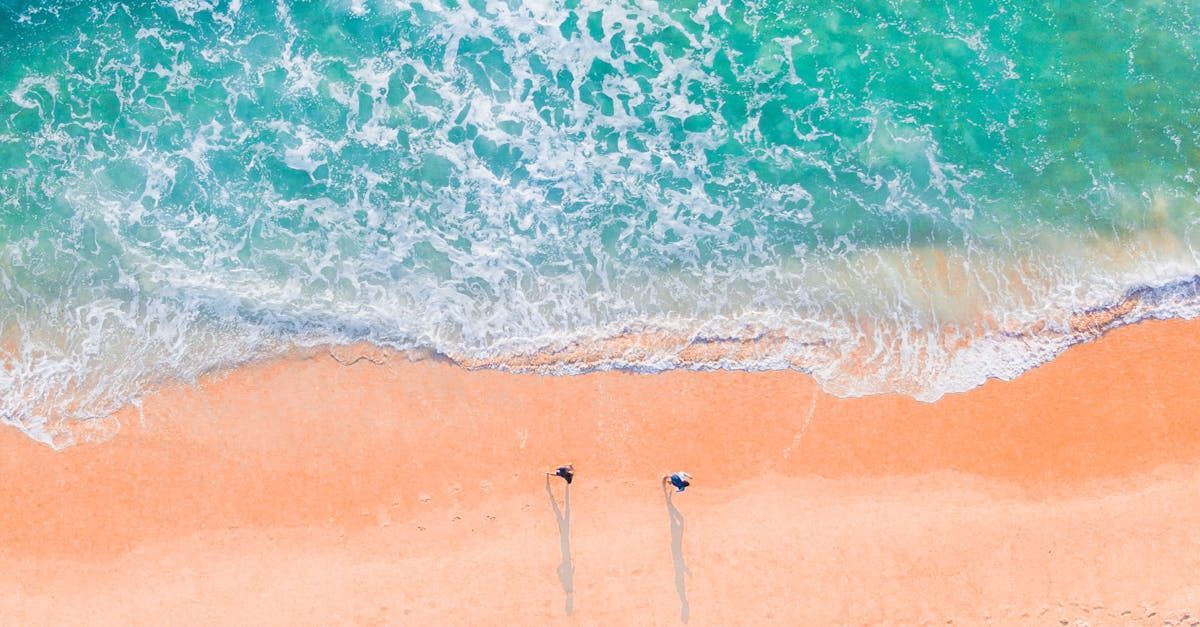Effective Shoreline Stabilization Techniques for Charleston's Coastal Areas

Key takeaways:
- Shoreline stabilization is crucial for protecting Charleston's coastal properties from erosion
- Natural methods like vegetation and living shorelines are often the most effective and environmentally friendly
- Hard structures like bulkheads should only be used as a last resort in high-energy areas
- A combination of techniques tailored to the specific site conditions usually works best
- Proper permitting and professional design are essential for successful shoreline projects in Charleston
Shoreline stabilization techniques are methods used to protect coastal land from erosion and maintain the natural shoreline. In Charleston, South Carolina, where tidal creeks, marshes, and beaches are an integral part of the landscape, effective shoreline stabilization is crucial for preserving both public and private property. Let's look at some of the most effective techniques used in the Lowcountry to combat coastal erosion and maintain healthy shorelines.
Understanding Charleston's Coastal Environment
Charleston's coastal areas are characterized by a complex system of barrier islands, tidal creeks, salt marshes, and sandy beaches. This unique environment is constantly shaped by wind, waves, and tidal action. The soft sediments and low-lying topography make the area particularly vulnerable to erosion, especially during storms and hurricanes.
The importance of natural buffers
Natural buffers like salt marshes and maritime forests play a critical role in protecting Charleston's shorelines. These ecosystems absorb wave energy, trap sediments, and provide habitat for diverse wildlife. However, human development and sea-level rise have put pressure on these natural buffers, making artificial stabilization necessary in many areas.
Factors influencing shoreline erosion in Charleston
Several factors contribute to shoreline erosion in the Charleston area:
- Tidal action and currents
- Storm surge and wave action
- Boat wakes
- Sea-level rise
- Loss of natural vegetation
- Altered hydrology due to development
Understanding these factors is essential for choosing the right stabilization techniques for a specific site.
Soft stabilization techniques
Soft stabilization techniques work with nature to protect the shoreline. These methods are often preferred in Charleston because they maintain the natural character of the coast and provide ecological benefits.
Vegetation planting
One of the most effective and environmentally friendly ways to stabilize shorelines in Charleston is through vegetation planting. Native plants like spartina alterniflora (smooth cordgrass) and Juncus roemerianus (black needle rush) have extensive root systems that help hold soil in place.
Living shorelines
Living shorelines are a popular technique in Charleston that combines natural vegetation with structural elements like oyster reefs or low stone sills. This approach creates a natural buffer that absorbs wave energy while providing a habitat for marine life.
Beach nourishment
For Charleston's barrier islands and beaches, sand replenishment or beach nourishment is often used to combat erosion. This involves adding sand to the beach to widen it and create a buffer against waves and storms.
Hard Stabilization Techniques
While soft techniques are preferred, there are situations in Charleston where harder structures are necessary to protect property, especially in high-energy environments.
Rip rap revetments
Rip rap revetments are sloped structures made of large stones or concrete blocks placed along the shoreline. They're commonly used in Charleston to protect against wave action and prevent soil erosion.
Bulkheads and seawalls
Vertical structures like bulkheads and seawalls are sometimes used in Charleston's tidal creeks and harbors. However, they're generally considered a last resort due to their potential negative impacts on adjacent properties and the environment.
Groins and jetties
These structures extend perpendicular to the shore and are designed to trap sand and reduce longshore drift. They're used sparingly in Charleston due to their potential to cause erosion on neighboring properties.
Hybrid Approaches
Many shoreline stabilization projects in Charleston use a combination of soft and hard techniques to achieve the best results.
Marsh toe revetments
This technique combines a low stone structure at the edge of an eroding marsh with native vegetation planting. It's effective in areas of Charleston with moderate wave energy.
Sills with marsh plantings
Similar to marsh-toe revetments, this approach uses a low stone sill placed offshore to create a protected area where marsh vegetation can be established or enhanced.
Permitting and Regulations
Shoreline stabilization projects in Charleston require careful planning and adherence to local, state, and federal regulations.
Local regulations
The City of Charleston and Charleston County have specific ordinances governing shoreline alterations. Property owners should consult with local planning departments before starting any project.
State and federal permits
Most shoreline projects in Charleston require permits from the South Carolina Department of Health and Environmental Control (DHEC) and the U.S. Army Corps of Engineers. These agencies review projects to ensure they comply with environmental regulations and don't negatively impact neighboring properties or public resources.
Choosing the Right Technique for Your Property
Selecting the appropriate shoreline stabilization technique for a Charleston property depends on several factors:
- Site conditions (wave energy, tidal range, soil type)
- Property use and value
- Environmental considerations
- Budget and long-term maintenance requirements
- Regulatory constraints
It's advisable to consult with a marine contractor or coastal engineer familiar with Charleston's unique coastal environment to determine the best approach for your specific situation.
The Role of Ongoing Maintenance
Shoreline stabilization is not a one-time fix. Regular maintenance is crucial to ensure the long-term effectiveness of any stabilization technique in Charleston's dynamic coastal environment.
Monitoring and adaptive management
Property owners should regularly inspect their shorelines and be prepared to make adjustments as needed. This might involve replanting vegetation, repairing structures, or adding material to maintain the desired level of protection.
Community-wide efforts
In many cases, shoreline stabilization is most effective when approached on a community or regional scale. Coordinated efforts can address erosion issues more comprehensively and avoid unintended consequences on neighboring properties.
Environmental Considerations
When implementing shoreline stabilization techniques in Charleston, it's important to consider the environmental impacts.
Preserving natural habitats
Wherever possible, stabilization methods should aim to preserve or enhance natural habitats. This is particularly important in Charleston's ecologically rich coastal areas.
Water quality impacts
Some stabilization techniques can affect water quality. For example, hardened structures can increase turbidity and alter sediment transport patterns. These factors should be carefully considered when designing a stabilization project.
The Future of Shoreline Stabilization in Charleston
As Charleston faces the challenges of climate change and sea-level rise, shoreline stabilization techniques will need to evolve.
Adaptive strategies
Future shoreline protection in Charleston may involve more adaptive strategies that can be adjusted over time as conditions change. This might include modular structures or phased approaches to stabilization.
Nature-based solutions
There's likely to be an increased emphasis on nature-based solutions that work with natural processes rather than against them. These approaches can provide multiple benefits, including flood protection, habitat creation, and carbon sequestration.
Economic Impacts of Shoreline Stabilization
Effective shoreline stabilization has significant economic implications for Charleston.
Property values
Protecting coastal properties from erosion helps maintain property values, which is crucial for Charleston's real estate market and tax base.
Tourism and recreation
Stable shorelines are essential for Charleston's tourism industry, supporting beaches, marinas, and other coastal attractions.
Financing Shoreline Stabilization Projects
Implementing shoreline stabilization can be costly. Here are some ways Charleston property owners can finance these projects:
- Local and state grants
- Low-interest loans for coastal protection
- Special assessment districts
- Public-private partnerships
Education and Outreach
Educating property owners and the public about shoreline stabilization is crucial for the long-term health of Charleston's coast.
Community workshops
Local organizations and government agencies often offer workshops on shoreline management techniques suitable for Charleston's coastal environment.
Demonstration projects
Demonstration sites showcasing different stabilization techniques can help property owners understand their options and see the results firsthand.
Conclusion
Shoreline stabilization is a critical issue for Charleston's coastal areas. By using a combination of natural and engineered solutions, tailored to specific site conditions and environmental considerations, it's possible to protect property while preserving the natural beauty and ecological function of Charleston's shorelines. As the city faces ongoing challenges from erosion and sea-level rise, innovative and adaptive approaches to shoreline stabilization will be essential for maintaining the health and resilience of Charleston's coastal ecosystems. For more information, you can visit our website or contact us.
- Technique Pros Cons Best suited for Vegetation planting Low cost, natural appearance, habitat creation May not be suitable for high-energy areas Low to moderate energy shorelines, marsh edges Living shorelines Combines natural and structural elements, habitat benefits Higher initial cost, requires expertise Moderate energy shorelines, areas with existing marsh Rip rap revetments Durable, effective in high-energy areas Can be visually obtrusive, may impact habitat High-energy shorelines, areas with steep banks Bulkheads Provides vertical protection, space-efficient Can cause erosion at structure ends, habitat loss Urban waterfronts, marinas, high-value property in confined spaces Permitting agency Type of permit Typical processing time Key considerations SC DHEC OCRM Critical Area Permit 30-90 days Environmental impact, compliance with Coastal Zone Management Act U.S. Army Corps of Engineers Section 404/10 Permit 60-120 days Impacts on navigable waters, wetlands City of Charleston Building Permit 2-4 weeks Compliance with local zoning and building codes Factors to consider when choosing a shoreline stabilization technique in Charleston:
- Wave energy and tidal range at the site
- Soil type and shoreline slope
- Presence of existing vegetation or structures
- Adjacent property conditions and potential impacts
- Long-term maintenance requirements and costs
- Environmental regulations and permitting requirements
- Desired aesthetic and functional outcomes
























































